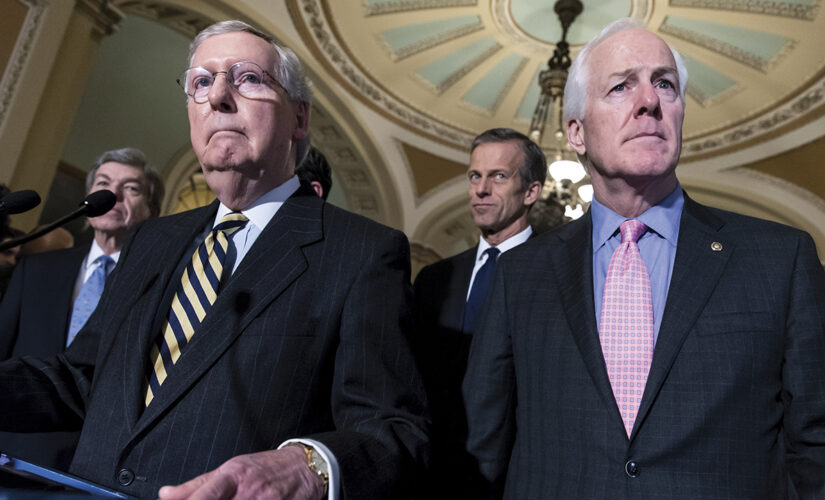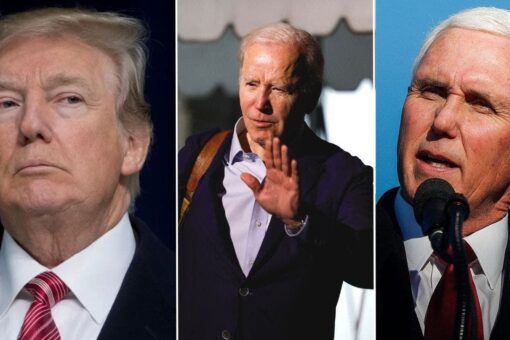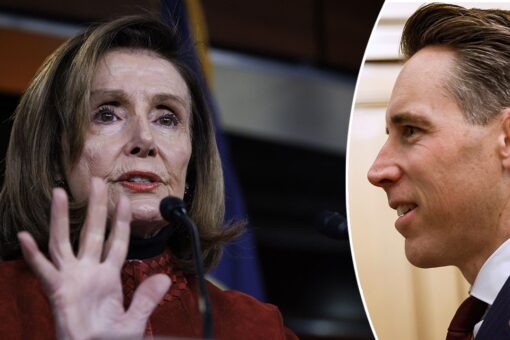NEWYou can now listen to Fox News articles!
It was late November, 1993.
President Clinton had not even been in office for a year. The Toronto Blue Jays just won the World Series for the second season in a row. “Home Improvement” and “Roseanne” were TV ratings juggernauts. Wayne’s World 2 hit the big screen. The price of gas was…
Well, let’s skip that one.
Let’s focus on November 30, 1993. That’s the last time Congress approved a major piece of firearms legislation.
THE HITCHHIKER’S GUIDE TO A POTENTIAL DEAL TO CURB GUN VIOLENCE
It was known colloquially as “The Brady Bill,” but formally titled “The Brady Handgun Violence Prevention Act.” Lawmakers named the legislation after White House Press Secretary James Brady. Gunman John Hinckley Jr. — just released from St. Elizabeths Hospital in Washington, D.C. — had shot Brady and others as while trying to assassinate President Ronald Reagan in 1981.
The bill imposed a five-day waiting period for the purchase of handguns. It only applied to states which didn’t have their own system to review the backgrounds of purchasers. A portion of the Brady Bill changed in 1998 to apply to the sale of all weapons, just not handguns.
Fast forward nearly 30 years, Congress is now closer to passing a major piece of legislation to curb firearms violence than it has been since that day in November 1993. There’s a general framework agreement, brokered by a coalition of ten bipartisan senators. They’re now cobbling together bill text.
Sen. Chris Murphy, D-Conn., spoke from the Senate floor after the school shooting in Uvalde, Texas.
(Senate Pool Video)
“I do see this as a breakthrough,” said Sen. Chris Murphy, D-Conn., the primary Democratic negotiator. “It’s not a coincidence that this Congress for 30 years couldn’t deal with the epidemic of gun violence in this country because — over and over again — it was easier to retreat to political corners than to make tough compromises.”
REPORTER’S NOTEBOOK: WILL PUSH FOR GUN CONTROL BE DIFFERENT THIS TIME?
In fact, Murphy went as far to say that “the heavy lifting is done.”
It is rare to hear a lawmaker engaged in such intense negotiations on a fragile piece of legislation with a fraught history exude such confidence. Congressional veterans know that the “longest mile” on Capitol Hill is often the last one. The halls of the U.S. Capitol are littered with the parliamentary carcasses of “must pass” bills and legislation which was all but wrapped up.
The old mantra in Congress is that “nothing is final is until everything is final.”
Things are certainly far from final on this bill. That’s why it’s unclear if exuberance is irrational at this stage.
=Sen. Mitch McConnell, R-Ky., left, and Sen. John Cornyn, R-Texas, right
(AP Photo/J. Scott Applewhite)
And don’t forget that the narrow, bipartisan agreement represents a sliver of a mega-gun agreement with teeth. It focuses mostly on tightening up rules for licensed federal gun dealers and protection orders for those who may do harm to themselves or others if they have a gun. These are commonly known as “red flag” regulations.
MCCONNELL ENCOURAGES CORNYN TO TALK WITH DEMOCRATS TO FIND COMMON GROUND ON GUN LAWS
The measure doesn’t “confiscate” weapons. It doesn’t outlaw high-capacity assault-style arms as advocated by many Democrats. In fact, the lead GOP negotiator in the talks, Sen. John Cornyn, R-Tex., touted the fact that he refused to go along with a Democratic request to raise the age to purchase high-capacity arms from 18 to 21. In other words, such a line in the sand could help Cornyn’s bona fides and build credibility with the right in the talks.
Cornyn was direct in what he was willing to negotiate.
“This proposal will only impact criminals and those adjudicated (to be) mentally ill. Law-abiding gun owners will not be subject to any new restrictions. Period,” said Cornyn.
The sides now must hammer out specifics of the bill and give lawmakers time to acquaint themselves with the text. There is also the issue of cost. Lawmakers from both sides want the bill to be paid for. Otherwise, some lawmakers would have a reason to vote no. The package will likely need a cost estimate from the Congressional Budget Office (CBO).
“The red flag laws have been known to need hundreds of millions of dollars,” said Sen. Richard Blumenthal, D-Conn. “But also, mental health will require billions. So we need to be prepared to offset it or provide money where appropriate.”
U.S. Senator from Connecticut Richard Blumenthal
(AP Photo/Efrem Lukatsky)
It may be debatable whether the “heavy lifting is done.” But there’s still work to do.
“My goal is to get the text done this week and then get it to the floor next week,” said Cornyn.
Supporters of the plan must also sell the package to their colleagues.
“If passed, it will unquestionably save lives and would be the most significant action on guns that the Senate has taken in nearly three decades,” said Senate Majority Leader Chuck Schumer, D-N.Y.
The plan also scored a boost from Senate Minority Leader Mitch McConnell, R-Ky.
“I’m comfortable with the framework,” said McConnell. “If the legislation ends up reflecting what the framework indicates, I’ll be supportive.”
A customer shops for a pistol at a sporting goods store.
(Scott Olson/Getty Images)
But some staunch gun supporters accused their Republican colleagues of selling out.
“I think Mitch McConnell and (Sen.) Lindsey Graham, R-S.C., and others in the Senate — it’s their job to protect our Second Amendment rights. They are completely failing our base,” charged a livid Rep. Marjorie Taylor Greene, R-Ga. “I’m really upset with Republican senators who are willing to pass this. They are just helping Joe Biden pass his agenda.”
It’s not just Republicans who have reservations. The Senate plan is a shadow of a strict gun control measure the House passed earlier this month which appealed to the left.
Progressives are worried about flooding schools with guns and police officers.
“I want to learn more about criminalization (of the schools),” said Rep. Alexandria Ocasio-Cortez, D-N.Y.
But other liberals are more open to the Senate plan.
“The top lines I saw I support. And I will vote yes on that bill,” said Rep. Jamaal Bowman, D-N.Y. “It’s a floor. Not a ceiling.”
Rep. Alexandria Ocasio-Cortez, D-N.Y., speaks with reporters, Thursday, June 17, 2021, as she arrives on Capitol Hill in Washington.
(AP Photo/Jacquelyn Martin)
“We don’t live in a perfect world. But we live in a perfect world where compromise is necessary,” said Rep. Don Beyer, D-Va. “My dad always said ‘You don’t go broke taking a profit.’ And this is a small profit. But a profit in the right direction.”
The push to curb firearms violence comes five years to the week after a gunman nearly killed House Minority Whip Steve Scalise, R-La., at a Congressional baseball practice.
Scalise is non-committal on the Senate package.
“Details matter. They matter a lot. So until we see any specifics that is something that we’re going to continue to watch to see what comes from the Senate,” said Scalise.
CLICK HERE TO GET THE FOX NEWS APP
The early days of the Clinton administration. The Toronto Blue Jays. Roseanne. Wayne’s World 2.
It’s been nearly three decades since Congress last passed a big gun bill. Not everything is worked out. But there’s a reason it’s been nearly 30 years. That’s why lawmakers are rushing to finish this bill before the window of opportunity collapses.




